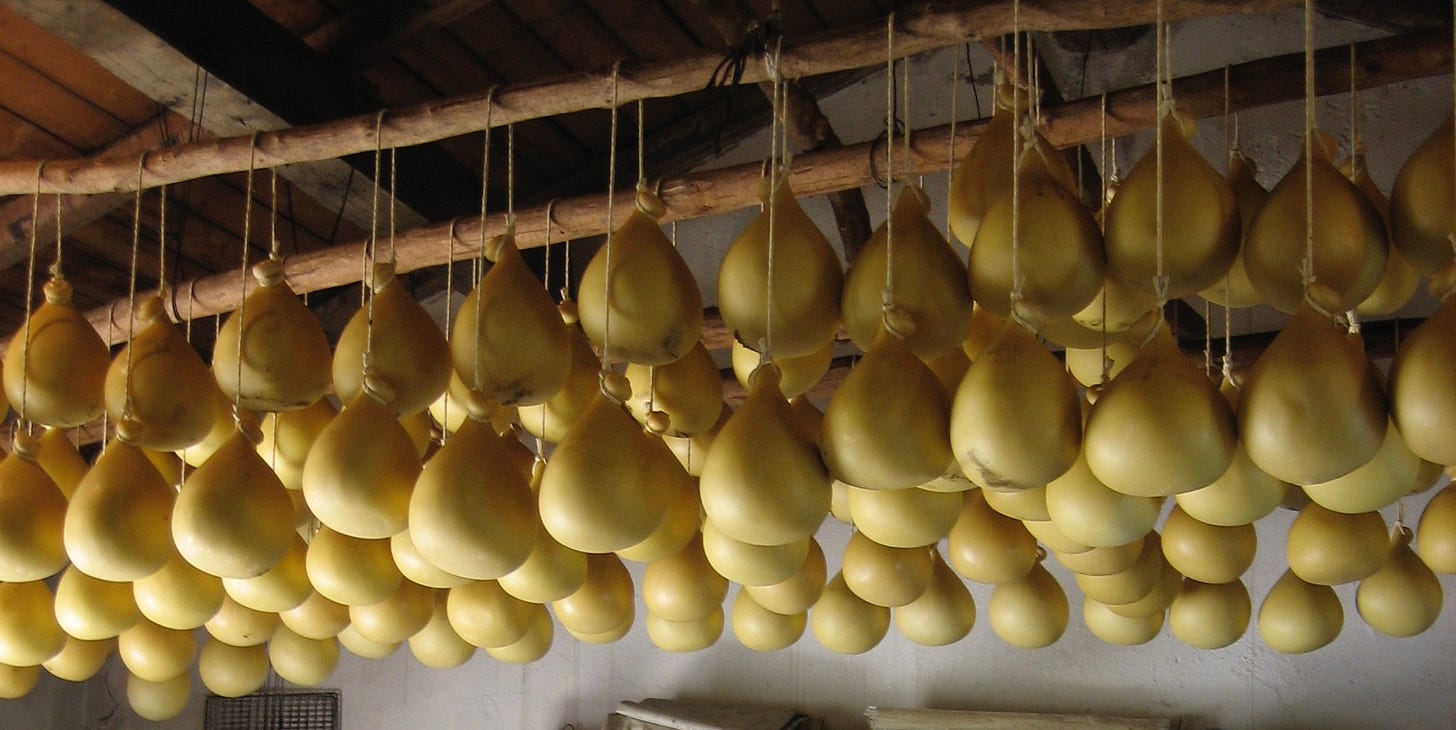Cheese Anthology Index
Cheese Glossary
How to Buy, Store, and Eat Cheese
I LOOK FOR THE platonic ideal. With each important traditional cheese, certain influences are typical and they define it: the regional environment, the kind of dairy animal, what the animals eat, the techniques, the size and shape. Often something very particular enters in. Each traditional cheese is a response to nature; it strongly reflects practicality and economics going back to the days of exclusively hand work, which sometimes persists; and it reflects a deep sense of pleasure.
It’s true that the differences between certain cheeses are small and that within each kind the cheeses have always varied, sometimes a lot, from maker to maker, from one week to the next, although today there’s more control. Sometimes appellation rules narrow the definition of a cheese and even exclude historical variations; what’s typical sometimes changes.
And yet to be authentically itself and taste as good as it can, a cheese should be a certain thing. Not that new things can’t be invented; not that a cheese in the style of Stilton can’t be implanted in Vermont; not that Penicillium roqueforti, famous for turning the interior of a ewe’s-milk cheese blue, can’t be successfully applied to the exterior of a goat’s-milk log; not that some of the best makers in Switzerland aren’t working outside the system of official names. But a great Époisses, for example, is a specific and wonderful creation, and playing with the method for making it is unlikely to lead to anything as satisfying and good.
In terms of understanding, I think these articles represent some of my best work. The original idea was that they shouldn’t tell stories and should hardly mention people. But I was drawn in more and more and began to write at greater length, and I’ve changed my mind. Sometimes now there are both people and a bit of story. Because careful research and writing require support, the anthology is accessible only to paid subscribers. (This introduction, How to Buy, the glossary, and the Époisses article are open to all.)
Suggested reading:
Androuët, Pierre. Guide du fromage. English edition, revised. Henley-on-Thames, UK, Aidan Ellis, 1983. New and revised edition. Originally published as Guide du fromage. Paris, Stock, 1971.
Behr, Edward. “Butter,” “Camembert,” and six more dairy entries. 50 Foods: A Guide to Deliciousness. New York, The Penguin Press, 2013.
Donnelly, Catherine. Ending the War on Artisan Cheese: The Inside Story of Government Overreach and the Struggle to Save Traditional Raw Milk Cheesemakers. White River Junction, Vermont, Chelsea Green, 2019.
Donnelly, Catherine, ed. The Oxford Companion to Cheese. New York, Oxford University Press, 2016.
Kindstedt, Paul. Cheese and Culture: A History of Cheese and Its Place in Western Civilization. White River Junction, Vermont, Chelsea Green, 2012.
McCalman, Max, and David Gibbons. Cheese: A Connoisseur’s Guide to the World’s Best. New York, Clarkson Potter, 2005.
Michelson, Patricia. Cheese: The World’s Best Artisan Cheeses. London, Jacqui Small, 2010.
Percival, Bronwen and Francis. Reinventing the Wheel: Milk, Microbes, and the Fight for Real Cheese. Oakland, California, University of California Press, 2017.
Rance, Patrick. The French Cheese Book. London, Macmillan, 1989.
Rance, Patrick. The Great British Cheese Book, second edition. London, Macmillan, 1988.





